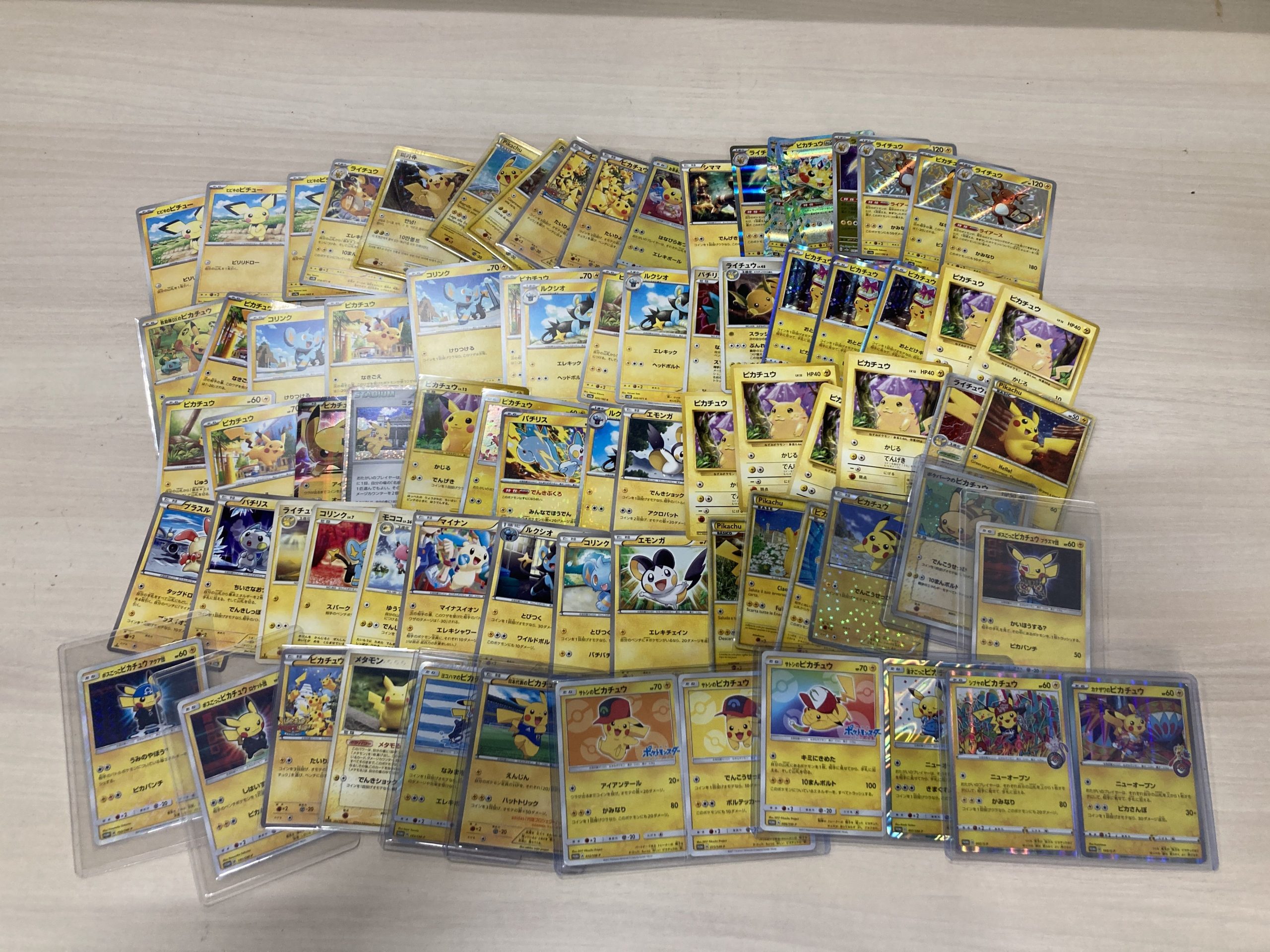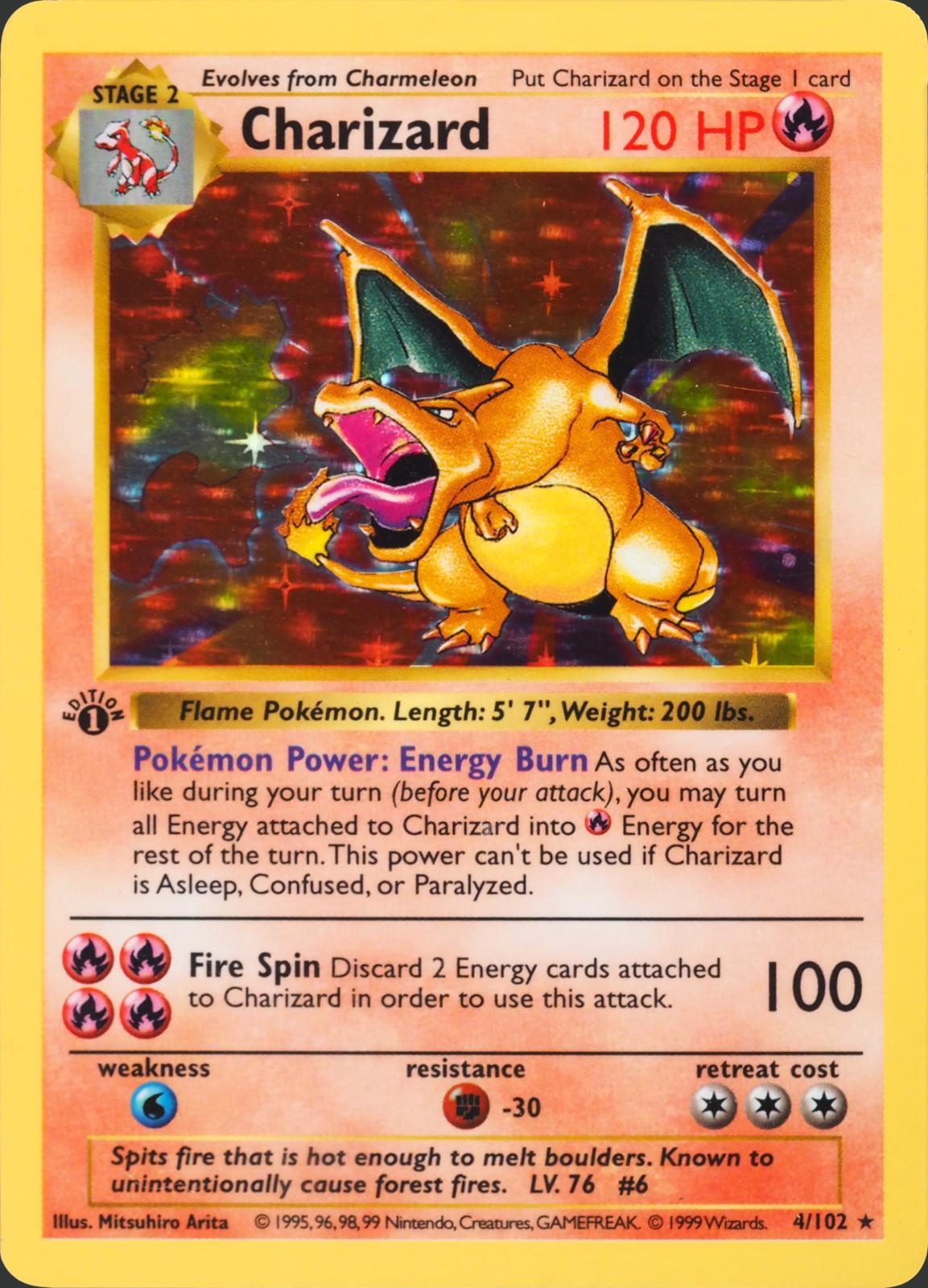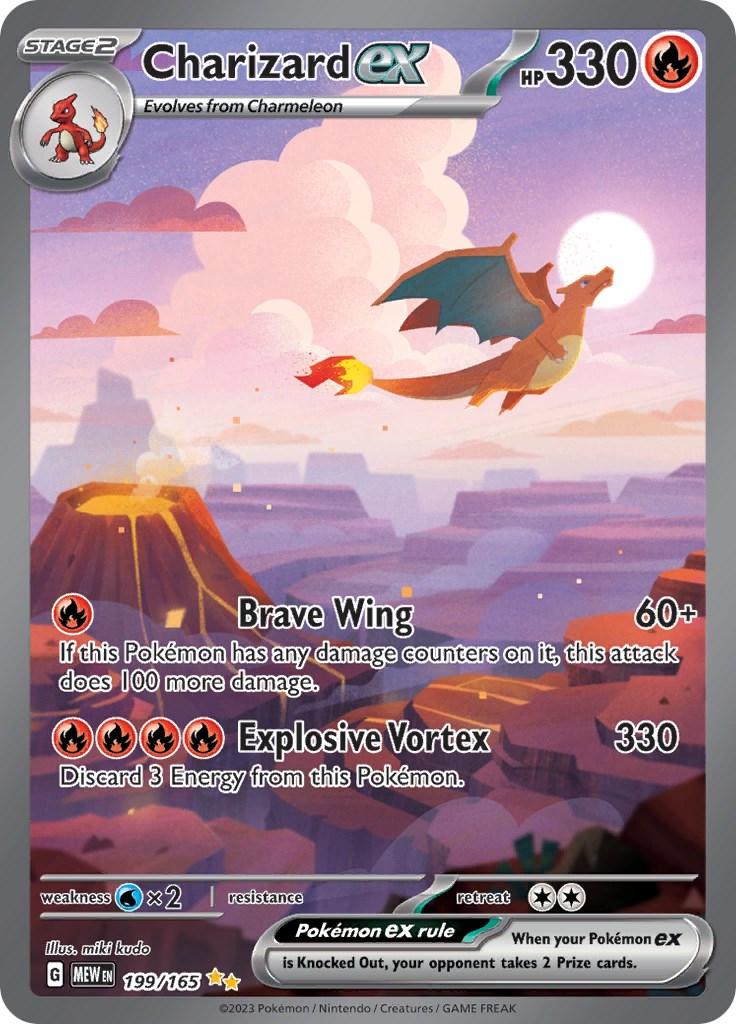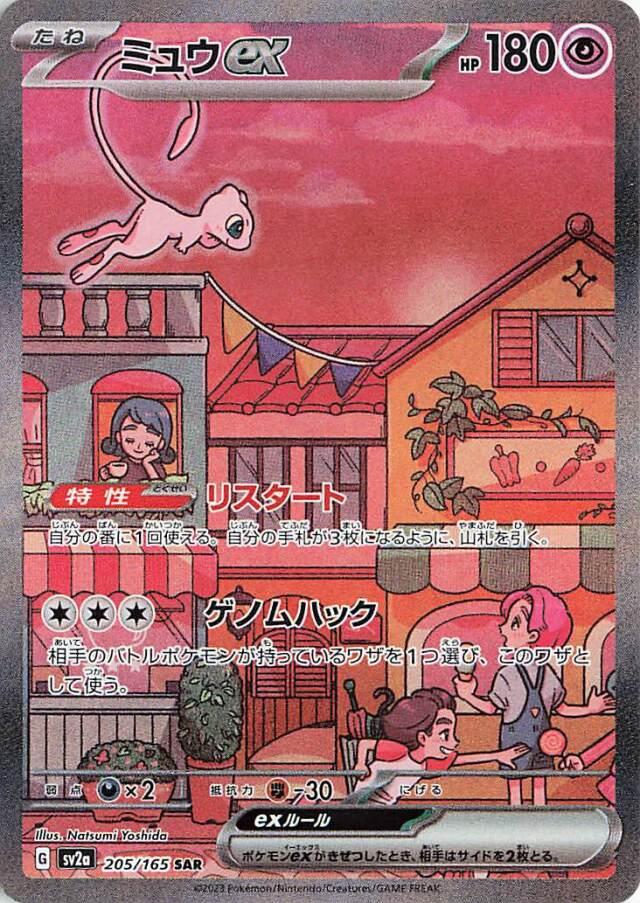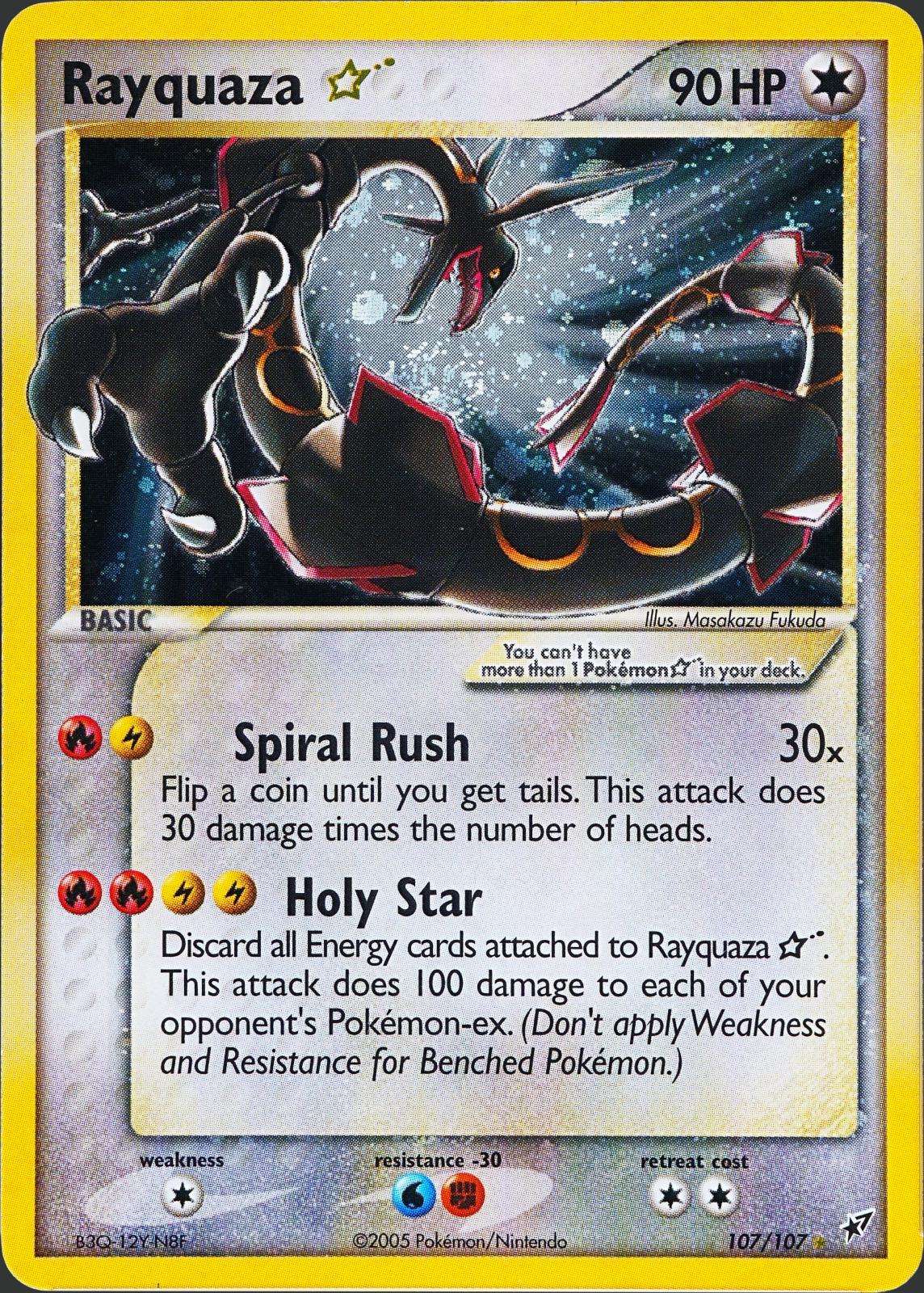What Makes a Pokémon Card Valuable?
Whether you’re digging through an old childhood binder or investing in collectibles for the future, understanding what makes valuable Pokémon cards truly valuable is the first step toward making informed decisions. Some cards are worth just pennies, while others have sold for over $100,000 at auction. So what separates the commons from the crown jewels of the Pokémon TCG world? In this section, we’ll explore the five core factors that influence card value: rarity, condition, set, popularity, and artwork.
1. Rarity: The Foundation of Value
Rarity is the single most important factor when determining the worth of valuable Pokémon cards. Cards are categorized by rarity symbols (circle for common, diamond for uncommon, star for rare), but the most valuable Pokémon cards often go beyond standard classification. These include:
- First Edition cards (especially from the Base Set)
- Promo-only releases (e.g., Illustrator Pikachu)
- Secret Rares and Alternate Arts (like SAR cards in Japanese sets)
- Foil variants such as the Master Ball pattern introduced in Japan’s Pokémon Card 151
Low print runs, exclusive distributions, and region-locked editions all create scarcity—making a card harder to find and therefore more desirable among collectors and investors.
2. Condition and Grading
A card’s physical condition has a direct and significant impact on its value. Even the rarest card loses market power if it has whitening, creases, or edge wear. Professional grading services like PSA, Beckett (BGS), and CGC assign objective scores based on centering, corners, surface, and edges. A card graded PSA 10 (Gem Mint) can sell for 5–10x more than the same card in raw or ungraded condition.
Why Grading Matters for Valuable Pokémon Cards
Grading certifies authenticity and condition, offering peace of mind to buyers. For high-value cards—especially Japanese SARs or vintage Charizards—grading is not just recommended, it’s essential for maximizing value.
3. Set and Series
The set a card originates from plays a major role in determining its long-term value. Cards from early sets like Base Set, Jungle, and Fossil are often more valuable due to nostalgia and limited availability. Modern sets like Pokémon 151 have also introduced ultra-rare variants, such as the Master Ball foil cards, that have become immediate collector favorites.
Why Pokémon 151 Changed the Game
Japan’s Pokémon Card 151 combined nostalgia with scarcity—featuring the original 151 Pokémon and including rare alternate art cards and secret rarities. Cards like Charizard ex SAR and Pikachu with Master Ball foil are already among the most valuable Pokémon cards released in the last decade.
4. Popularity of the Pokémon
Not all Pokémon are created equal in the eyes of collectors. Iconic Pokémon like Charizard, Pikachu, Mewtwo, and Gengar consistently fetch higher prices than lesser-known species. This is driven by brand recognition, pop culture exposure, and character nostalgia. Even in newer sets, cards featuring these Pokémon—especially in rare foiling or special art styles—often top value charts.
Market Demand and Pop Culture Influence
Media exposure (movies, games, memes) and celebrity endorsements can also impact the price of valuable Pokémon cards. For example, Logan Paul’s 1st Edition Charizard PSA 10 sale significantly increased demand (and prices) for vintage Charizards overnight.
5. Artwork and Artist Legacy
Finally, artwork has become a major factor in what makes a Pokémon card truly valuable. Collectors increasingly seek cards not just for rarity, but for aesthetic appeal. Artists like Mitsuhiro Arita, miki kudo, and Tomokazu Komiya have built loyal followings, and their art cards—especially Special Art Rares (SARs)—are often among the most valuable Pokémon cards in a set.
Art as a Driver of Collector Value
Take the Gengar Master Ball foil from Pokémon 151—illustrated by Komiya, it combines one of the franchise’s most beloved ghost-types with one of the rarest foil patterns and one of the most unique art styles in the game. It’s no surprise this card continues to climb in value on the secondary market.
Understanding what makes a card valuable is key whether you're buying, selling, or collecting. From rarity and condition to the set and character on the card, each factor plays a crucial role in shaping the market for valuable Pokémon cards. As new sets like Pokémon 151 continue to blur the lines between art, nostalgia, and investment, being informed gives you a real edge in this fast-moving collectible market.
Top 10 Most Valuable Pokémon Cards (Updated 2025)
If you’re searching for the most valuable Pokémon cards today, you’re not alone. From nostalgic collectors to modern investors, people everywhere are eager to know which Pokémon cards are worth serious money in 2025. The market continues to grow, with rare Japanese releases and vintage English cards consistently breaking auction records. This updated list ranks the 10 most valuable Pokémon cards, combining recent sales data, collector demand, and historical significance.
1. Illustrator Pikachu (1998 Promo)
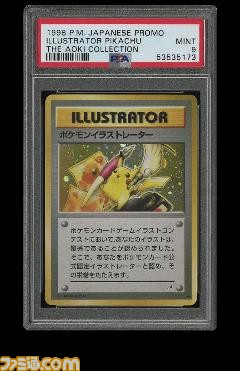
Image source:https://www.famitsu.com/news/202302/25294060.html
Considered the “holy grail” of Pokémon cards, the Illustrator Pikachu card was awarded to winners of a Japanese art contest in 1998. Only 39 copies were issued, and far fewer exist in high grade. In 2022, a PSA 10 copy sold for over $5 million. It remains the most expensive and one of the most valuable Pokémon cards ever made.
2. Shadowless Charizard 1st Edition (Base Set, 1999)
This iconic Charizard card, especially in PSA 10 condition, continues to hold strong as one of the most recognized and valuable Pokémon cards of all time. With sharp artwork by Mitsuhiro Arita and its status as a 1st Edition Shadowless, it has become a trophy card. Recent high-grade sales exceed $400,000.
3. Gengar (Master Ball Foil, Japanese Pokémon 151)
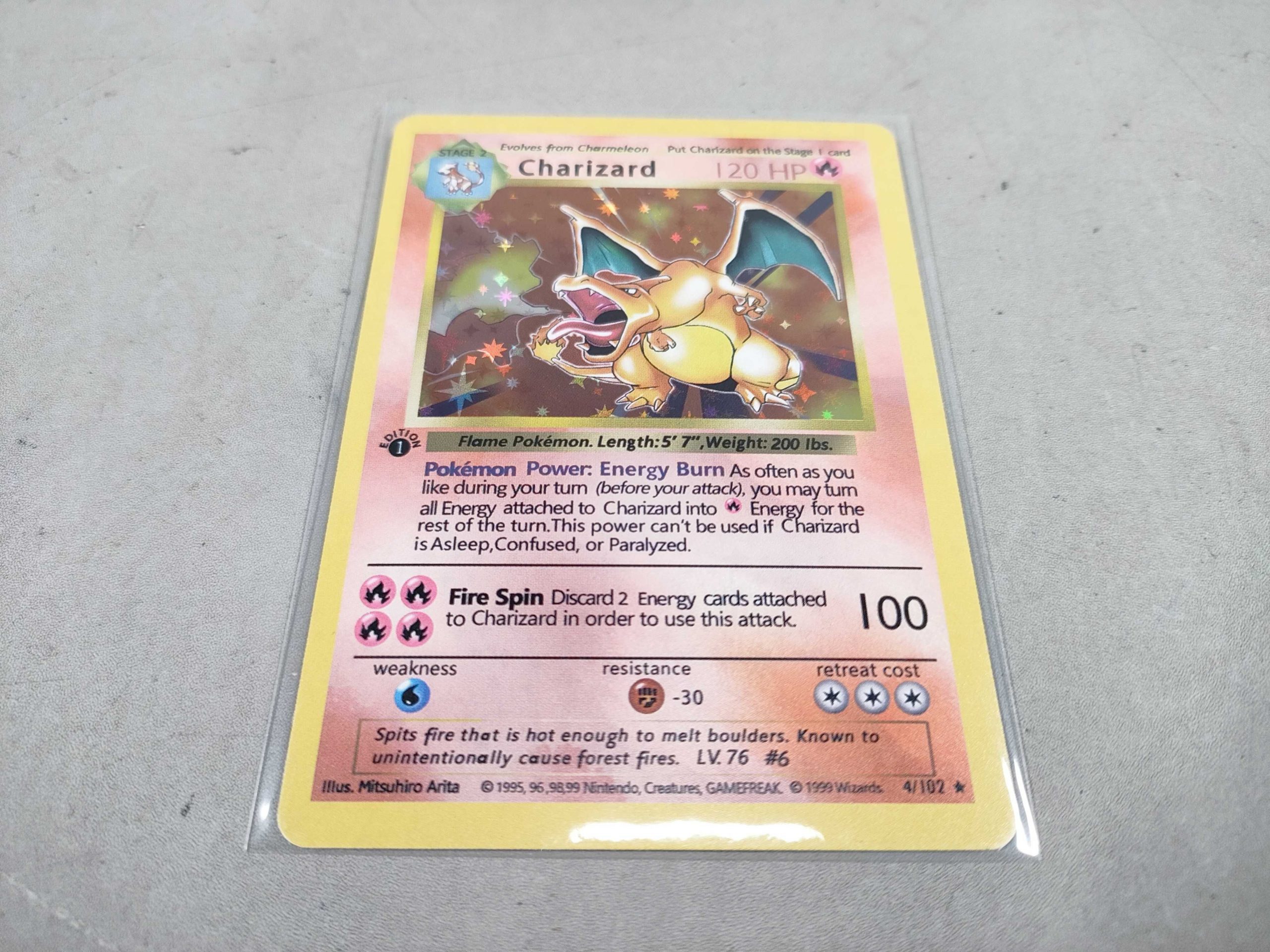
One of the breakout stars of the Japanese 151 set, this Gengar card features the elusive Master Ball foil pattern and artwork by Tomokazu Komiya. Its surreal style, combined with the popularity of the Pokémon and the rarity of the foil, makes it one of the most valuable Pokémon cards released in recent years, currently valued at over $200.
4. Charizard ex SAR (Pokémon Card 151, 2023)
Charizard remains a top-tier collectible, and the Special Art Rare (SAR) version from Japan’s Pokémon 151 set is no exception. The artwork, vivid colors, and limited Japanese print have made this card highly sought-after. Prices have remained strong at around $190, placing it among the most valuable Pokémon cards of the modern era.
5. Pikachu (Master Ball Foil, Pokémon Card 151)
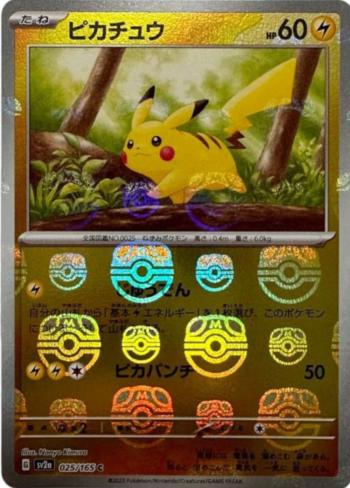
Image source:https://www.pricecharting.com/game/pokemon-japanese-scarlet-&-violet-151/pikachu-master-ball-25
This version of Pikachu, arguably the most recognizable Pokémon, combines nostalgia and rarity. The Master Ball foil variant from Pokémon 151 is already fetching over $160 and rising. It’s one of the most instantly recognizable modern valuable Pokémon cards.
6. Mew ex SAR (Pokémon Card 151)
The Mew ex SAR card has quickly become a fan-favorite thanks to its dreamy pink artwork and strong playability. It’s also a powerful competitive card in the Japanese format. This has driven collector and player demand, keeping its value high at over $75—making it a contender among current valuable Pokémon cards.
7. 1999 Tropical Wind (Tropical Mega Battle Promo)
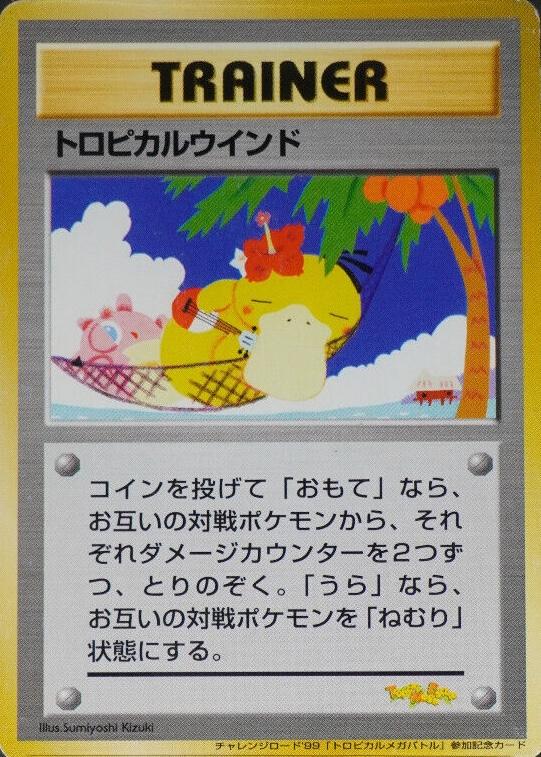
Image source:https://www.pricecharting.com/game/pokemon-japanese-promo/tropical-wind-tropical-mega-battle
A true trophy card, Tropical Wind was awarded to participants of the 1999 Tropical Mega Battle tournament in Hawaii. Its rarity and history make it one of the most desirable and valuable Pokémon cards, with PSA 10 copies selling for tens of thousands of dollars.
8. Blastoise ex SAR (Pokémon Card 151)
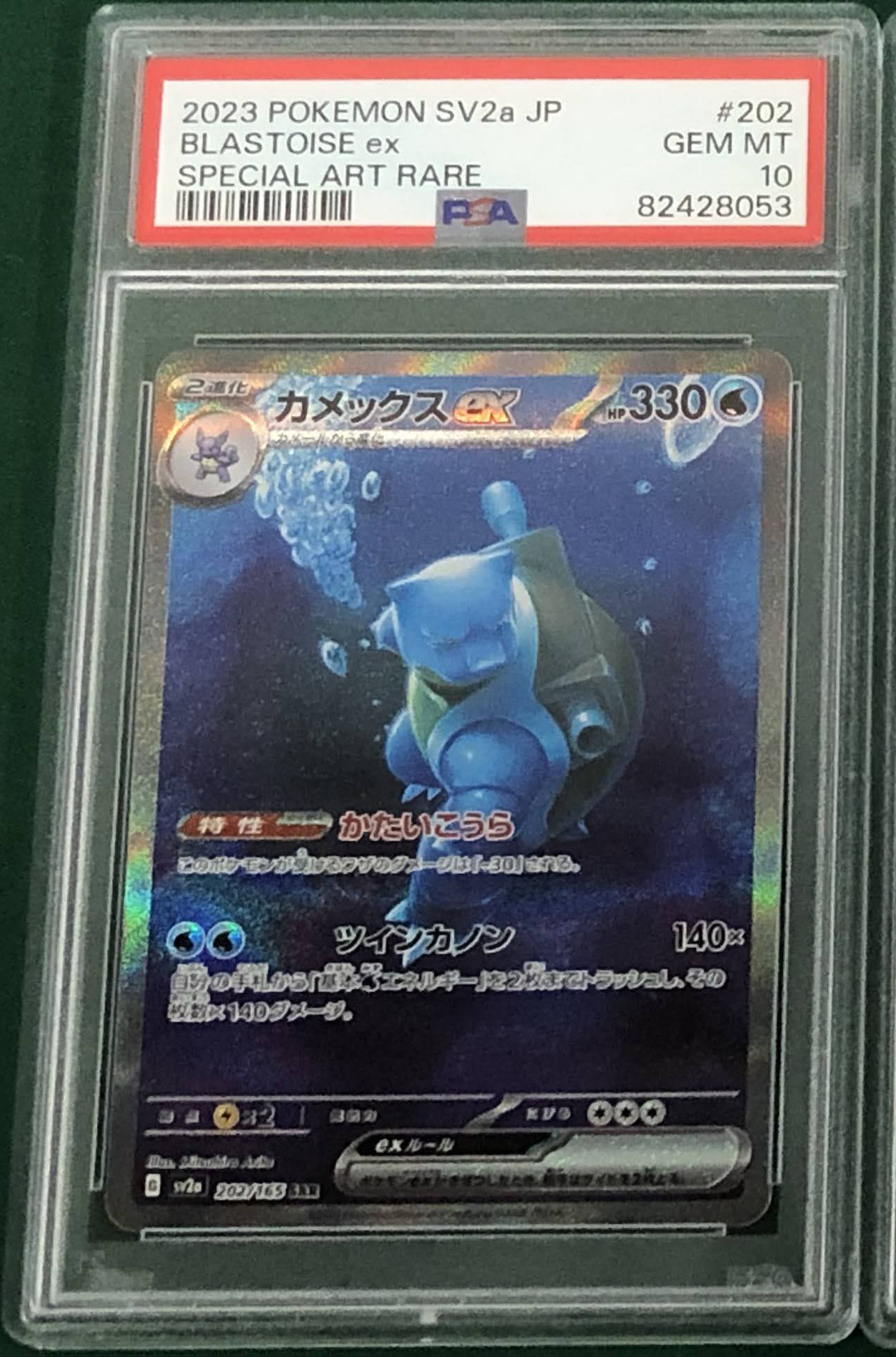
Another standout from Pokémon 151, Blastoise ex SAR brings Mitsuhiro Arita’s art to the forefront again. The card pairs perfectly with Squirtle and Wartortle SARs for a full evolution display, and currently sits at around $60–$70. It’s one of the most valuable Pokémon cards among modern collectors looking for aesthetic and nostalgic synergy.
9. Gold Star Rayquaza (EX Deoxys, 2005)
Rayquaza’s Gold Star card is legendary among collectors for both rarity and difficulty in pulling from packs. PSA 10 copies consistently sell for $40,000+. Its design and mythical status in the game universe secure its place in the top 10 most valuable Pokémon cards.
10. Erika’s Invitation SAR (Pokémon Card 151)
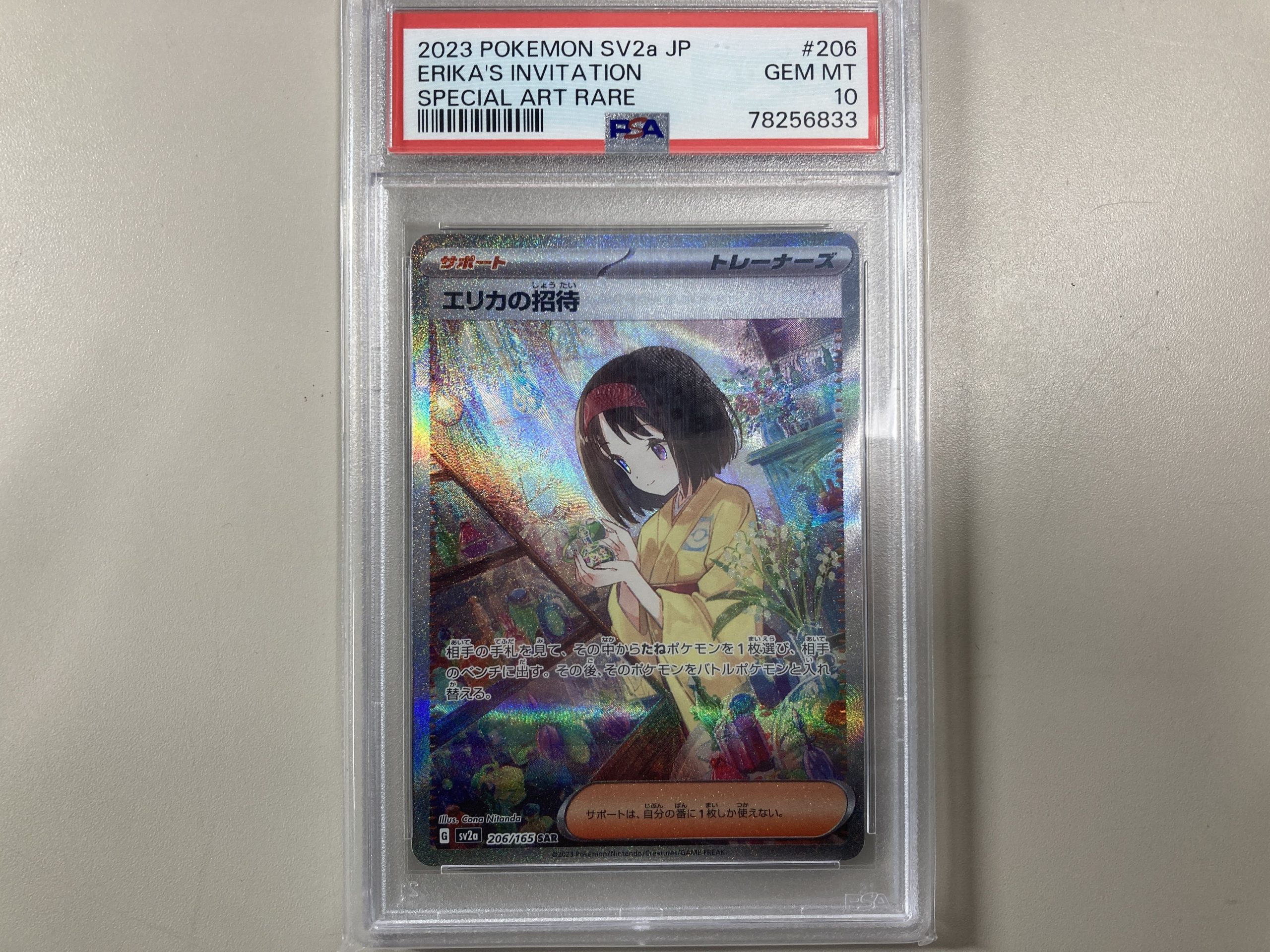
While not the most expensive card on the list, Erika’s Invitation SAR is rising fast due to its stunning artwork and character-driven nostalgia. With prices currently hovering around $30–$40 and trending upward, it’s a strong modern example of a card with growing value.
Honorable Mentions
- Magikarp Master Ball Foil – Underdog charm, recent sales over $35
- Mewtwo Master Ball Foil – Legendary appeal and rare pattern
- Zapdos ex SAR – Dynamic design featuring the Legendary Birds
The Pokémon card market in 2025 continues to be dynamic and exciting. From Japanese exclusives like Pokémon 151’s Master Ball cards to vintage legends like Illustrator Pikachu, the world of valuable Pokémon cards offers opportunities for collectors, investors, and nostalgic fans alike. Whether you’re looking to buy, sell, or simply admire these cardboard treasures, keeping up with the most valuable Pokémon cards ensures you stay ahead in this ever-evolving hobby.
How to Check If Your Pokémon Card Is Worth Money
If you’ve ever stumbled across a stack of old Pokémon cards and wondered, “Could any of these be valuable?”, you’re not alone. With recent headlines about rare cards selling for thousands—or even millions—of dollars, collectors and casual fans alike are eager to know if they own any valuable Pokémon cards. In this guide, we’ll walk you through how to evaluate your Pokémon cards step-by-step using online tools, serial numbers, rarity indicators, and price charts. Even if you’re just starting out, this process can help you make informed decisions about what to sell, grade, or keep.
1. Identify the Card's Set and Number
The first step in determining the value of a card is identifying exactly which card you have. Every Pokémon card has a set symbol, card number, and sometimes a language-specific identifier. Look at the bottom-right corner of the card for a fraction (e.g., 4/102), which tells you the card’s number in its set. Also check the symbol next to the number, which reveals which set the card comes from.
Use Set Guides and Databases
Free databases like Pokélector and TCGplayer offer complete lists of every set, card number, and rarity. These resources are critical for identifying cards correctly—especially if you're dealing with first editions, shadowless prints, or promotional releases that are commonly mistaken for standard prints. Misidentifying a card is one of the top reasons people miss out on recognizing valuable Pokémon cards.
2. Check the Rarity Symbol
Pokémon cards use a simple rarity system: a circle means common, a diamond means uncommon, and a star means rare. But that’s just the beginning. Some of the most valuable Pokémon cards feature unique symbols or no symbols at all (as in some early Japanese cards). Pay attention to special symbols such as:
- Star H: Holo Rare
- Gold Star: Ultra-rare cards from the EX era
- Promo Stamp: Indicates promotional or limited-run cards
- Master Ball Foil Pattern: Found only in select Japanese 2023–2024 releases
The combination of a rare symbol and a special foil or limited print often leads to extremely high market value.
3. Evaluate the Card’s Condition
Even the rarest card loses value if it’s in poor shape. When assessing whether you own valuable Pokémon cards, condition is one of the most important factors. Grading standards consider four key areas: centering, corners, edges, and surface.
Raw vs Graded Value
If your card is in near-mint or mint condition, it might be worth sending to a grading service like PSA or Beckett. A PSA 10 card can be worth 10 times more than its ungraded counterpart. However, grading only makes sense if the card is already valuable—so it's wise to use online price checkers before investing in this step.
4. Use a Pokémon Card Price Checker
Tools like TCGplayer, eBay Sold Listings, and PriceCharting are the go-to platforms for evaluating card prices. Simply search the exact name and number of your card, and filter by condition and sales date. This will give you an accurate estimate of what your card is currently worth on the secondary market.
How to Analyze Price Trends
Don't just look at one listing—compare several recent sold prices across platforms. Cards can spike or dip depending on trends, such as new game releases, tournament formats, or influencer attention. For example, after the release of Pokémon 151, cards like Gengar and Pikachu with Master Ball foil saw rapid increases in demand, instantly becoming some of the most valuable Pokémon cards in modern sets.
5. Look for Grading Serial Numbers
If you bought or inherited a graded card, check the serial number on the case. PSA, CGC, and BGS all allow you to look up the exact details and population reports of a card. This can tell you not only whether the card is authentic, but how many other high-grade versions exist in the world—critical context for determining scarcity.
Why Population Reports Matter
A card might be valuable not just because it’s rare, but because it’s rare in high condition. For example, there may be only 20 PSA 10 copies of a certain SAR card from Pokémon 151, which dramatically increases its value. Understanding pop reports is key to identifying truly valuable Pokémon cards.
Checking whether your Pokémon cards are worth money doesn’t require expert knowledge—but it does require attention to detail. By using the steps above—identifying the set, checking rarity, evaluating condition, researching prices, and verifying grading—you can confidently assess whether you own any valuable Pokémon cards. With tools and platforms now more accessible than ever, there’s no better time to discover the hidden value in your collection.
Rare Symbols, Editions, and Foils to Look For
One of the most exciting parts of collecting is learning how to spot hidden gems within your Pokémon card collection. Many of the most valuable Pokémon cards don’t immediately look special—unless you know what to look for. Understanding rare symbols, first edition stamps, special foil patterns, and regional exclusives is essential for identifying high-value cards. This guide breaks down the visual and textual clues that signal true rarity and potential investment value.
1. Shadowless Cards
One of the easiest ways to spot a card that might be valuable is to check if it's a "shadowless" print. Found primarily in the original 1999 Base Set, shadowless cards lack the drop shadow on the right edge of the Pokémon portrait box. This minor detail indicates an earlier printing run and significantly boosts the card’s value—especially if combined with the 1st Edition stamp. Shadowless Base Set Charizards, for example, are among the most valuable Pokémon cards ever produced.
How to Spot Shadowless Prints
Compare the right edge of the portrait window to another card from the same set. If there's no shadow and the font appears thinner or slightly different, you likely have a shadowless variant.
2. First Edition Stamps
First Edition cards are marked with a black “Edition 1” symbol on the left side of the card, just below the artwork. These were the first print run of any given set and are almost always more limited in quantity. First Edition holographic cards from the early sets—especially Base Set, Jungle, and Fossil—are some of the most valuable Pokémon cards in existence, especially when graded in high condition.
English vs. Japanese First Editions
While English First Edition cards are well-known, some Japanese cards also have first print indicators—often in the form of gold “1st Edition” stamps or absence of reprint logos. These Japanese cards are highly sought after due to their early release and superior print quality.
3. Holographic (Holo) Patterns
Holographic cards are a staple of Pokémon collecting, but not all holos are created equal. Cards with a star rarity symbol and a holographic image often fetch significantly more than their non-holo counterparts. In particular, Base Set holos, early promotional holos, and full-art holographic cards can be considered extremely valuable Pokémon cards.
Reverse Holo vs. Holofoil
Modern sets often include reverse holos, where the image is matte and the rest of the card is foil. While visually striking, these are generally less valuable than traditional holofoil cards, unless part of a special edition or rarity pattern (like the Master Ball foil, explained below).
4. Master Ball Foil Pattern
Introduced in Japan’s 2023 Pokémon Card 151 set, the Master Ball foil pattern is an ultra-rare parallel holo variant featuring Master Ball designs shimmering in the background. These cards are not only visually unique but also released in extremely limited quantities—especially compared to standard holo or reverse holo variants.
Key Master Ball foil cards like Gengar, Pikachu, and Mewtwo have already reached collector-favorite status. Their scarcity, combined with nostalgic and competitive relevance, places them among the most valuable Pokémon cards in recent years.
Where to Find Master Ball Foils
These cards are currently exclusive to Japanese booster boxes such as the 151 set. Each box typically includes only one or two Master Ball cards, making complete sets a major challenge to assemble.
5. Japanese-Exclusive Variants
Japan has always been ahead of the curve when it comes to card design, packaging, and artwork exclusives. Many valuable Pokémon cards originate in Japanese-only releases or have alternate art versions not available in English. Examples include:
- Illustrator Pikachu (1998): Only given to winners of a Japanese art contest—considered the rarest card ever.
- Vending Series Promos: Distributed via vending machines in the late '90s, rarely seen in the U.S.
- Pokémon Card 151 SARs: Special Art Rares of classic Gen 1 Pokémon with artistic redesigns.
Why Japanese Cards Are Often More Valuable
In many cases, Japanese cards are printed in lower volumes, have better print quality, and are released earlier than their English counterparts. Collectors prize them for both visual appeal and historical relevance, making them some of the most valuable Pokémon cards in global markets.
Whether you're sorting through your childhood binder or opening brand-new Japanese booster packs, knowing how to spot rare symbols, foils, and editions is the key to identifying valuable Pokémon cards. From shadowless Charizards to Japanese-exclusive Master Ball foils, these visual cues can instantly reveal if you’re holding a card worth hundreds—or even thousands—of dollars. Pay close attention to these markers, and you’ll be one step ahead in the world of Pokémon collecting.
下記の各見出しとその見出しの下にある小見出しについて、これまでに纏めた「valuable pokemon cards」 のポイント内容の踏まえて、アクセスが多く見込めるようseoに効果的な文章で、検索ユーザーが共感し、ページの目的が明確で、専門性、権威性、信頼性、オリジナル性があり、気持ちが高まる魅力的なブログ記事をブログのプロの目線で文字数1000文字程度で作ってください。キーワードは「valuable pokemon cards」 ですので「valuable pokemon cards」 のキーワード出現率が1%以上出現するようにしてください。また、大見出しには
タグ、中見出しには
タグ、小見出しには
タグを付けて、全てソースでください。アメリカで上位表示を狙うので文章は英語で作ってください。※絵文字は仕様しないこと
5. 💵 Where to Sell Valuable Pokémon Cards (Safely & Profitably)
Compare trusted platforms like eBay, TCGplayer, Heritage Auctions, and what to know before selling.
Should You Get Your Pokémon Cards Graded?
Grading has become a critical part of the modern trading card market, especially when it comes to valuable Pokémon cards. Whether you're a collector looking to protect your investment or a seller hoping to boost a card’s market value, understanding when and how to get your cards graded is essential. In this guide, we'll break down the benefits of grading, how to decide if it's worth it, and which grading company—PSA, BGS, or CGC—is best for your needs.
1. What Does Card Grading Actually Do?
Grading a Pokémon card means sending it to a professional third-party service that authenticates the card, evaluates its condition, and assigns a numerical grade—usually from 1 (Poor) to 10 (Gem Mint). The card is then sealed in a tamper-proof slab with its details and grade clearly displayed. For valuable Pokémon cards, grading not only confirms authenticity but dramatically affects resale value.
Key Factors Evaluated in Grading
- Centering: How balanced the image is on the card
- Edges: Cleanliness and wear along the edges
- Corners: Sharpness and shape
- Surface: Scratches, print lines, or other imperfections
2. When Is Grading Worth It?
Not every card should be graded. Grading involves time, cost, and risk—so it should be reserved for cards that are already rare or in pristine condition. If you're holding one of the top-tier valuable Pokémon cards, such as a 1st Edition Charizard, Master Ball foil Gengar, or any Illustrator Pikachu variant, grading can easily double or triple the value.
Examples When Grading Pays Off
- A raw card valued at $800 might sell for $2,500 as a PSA 10
- Limited-edition cards often gain buyer trust when authenticated
- Graded cards are more desirable to investors and auction houses
On the other hand, grading a $10 card won’t make sense unless it’s sentimental or part of a personal collection. Be selective and use pricing tools like TCGplayer or eBay sold listings to determine current market value before deciding.
3. PSA vs. BGS vs. CGC: Which Grading Company Is Best?
Choosing the right grading company can influence both resale value and buyer trust. Below is a breakdown of the most reputable services for valuable Pokémon cards in 2025.
PSA (Professional Sports Authenticator)
- Pros: Highest brand recognition and resale value
- Turnaround: Typically 2–3 months depending on tier
- Cost: Starts around $20–50 per card
- Best for: Iconic cards, investment pieces, high-grade flips
BGS (Beckett Grading Services)
- Pros: Detailed subgrades and premium "Black Label 10"
- Turnaround: Slower than PSA but offers high precision
- Cost: Higher-end tiers can be expensive
- Best for: Modern full-art and collector's edition cards
CGC (Certified Guaranty Company)
- Pros: Fastest turnaround, lower fees, rising reputation
- Turnaround: 2–4 weeks on average
- Cost: Starts around $15–20 per card
- Best for: Mid-value cards or large submissions
4. How Grading Impacts Value
The grading number directly affects a card’s marketability. A card graded PSA 10 or BGS 9.5+ is far more likely to attract premium buyers. It also eliminates most concerns about condition disputes, especially in high-stakes sales of valuable Pokémon cards.
Impact of Popular Grading Tiers
- PSA 10: Gem Mint, top-dollar sale potential
- PSA 9: Mint, still a strong value jump from raw
- BGS 9.5/10: Preferred by condition-purist collectors
- CGC 9.5+: Becoming more accepted in the market
Keep in mind that even a PSA 8 can outperform a raw card if it's rare enough. Collectors want peace of mind—and grading provides that assurance.
5. Tips Before Sending Your Cards In
Before grading your valuable Pokémon cards, inspect them carefully using a magnifier and soft light. Clean them gently (never alter or press), use penny sleeves and card savers, and double-box for safe shipping. Most grading companies also require submission forms and membership tiers, so review instructions carefully to avoid costly mistakes.
Grading isn’t just about protection—it’s a strategic investment that can unlock the full potential of your valuable Pokémon cards. Whether you're chasing top-dollar returns or just want to secure your collection’s legacy, choosing the right time, service, and approach to grading is key. With the continued surge in the Pokémon TCG market, 2025 remains one of the best times in history to get your prized cards professionally graded.
Investment Trends: Are Pokémon Cards Still Worth Collecting in 2025?
The world of valuable Pokémon cards continues to captivate collectors and investors alike in 2025. With fluctuating markets and evolving collector demand, many enthusiasts ask: Are Pokémon cards still a worthwhile investment? The answer is a confident yes — but success depends on understanding current trends, knowing which cards to focus on, and keeping an eye on emerging sets like Pokémon 151 that are rapidly increasing in value.
Understanding the Current Market for Valuable Pokémon Cards
Over the last decade, valuable Pokémon cards have transformed from nostalgic collectibles into a serious asset class. The market’s growth has been fueled by both longtime collectors and new investors drawn by record-breaking sales. Despite occasional dips, the overall trend in 2025 points upward, with demand especially high for rare, first-edition, and graded cards.
Why Are Pokémon Cards Still Popular?
- Nostalgia and Culture: Millennials and Gen Z view Pokémon cards as a cultural icon, boosting emotional and financial value.
- Scarcity: Limited print runs and shadowless or first-edition variations keep supply low and prices high.
- Grading Impact: Professionally graded valuable Pokémon cards attract investors by guaranteeing condition and authenticity.
Collector Demand Driving Value in 2025
Collector enthusiasm remains a key driver behind rising prices of valuable Pokémon cards. Online marketplaces, auction houses, and social media communities contribute to increased awareness and competition. Cards from iconic sets like Base Set, Neo Genesis, and Gym Challenge remain highly sought after, with some cards fetching six- or even seven-figure sums.
Emerging Trends to Watch
- Rise of Pokémon 151: This set, featuring 151 newly designed Pokémon cards released in recent years, is rapidly gaining traction. Many of these cards are rare, holographic, and limited edition, making them future collectibles.
- International Editions: Japanese-exclusive cards and limited promos are attracting global interest, expanding the collector base.
- Pop Culture Crossovers: Collaborations with brands and celebrities are creating unique valuable Pokémon cards, adding to their investment appeal.
Key Factors to Consider Before Investing
While valuable Pokémon cards offer exciting investment potential, buyers must be cautious and well-informed. Understanding the condition, authenticity, and provenance of a card is crucial. Here are some essential considerations:
Condition and Grading
Cards graded PSA 9 or above tend to command premium prices. Grading ensures protection against damage and guarantees the card’s authenticity, which boosts buyer confidence.
Rarity and Popularity
First Edition cards, holographic foils, and cards featuring fan-favorite Pokémon typically hold the highest value. Monitor trends as some lesser-known cards can become unexpectedly valuable.
Market Timing
The collectible card market can be volatile. Successful investors watch for optimal buying and selling windows, influenced by hype, tournaments, and pop culture events.
Where Is the Market Heading?
Experts predict continued growth for valuable Pokémon cards through 2025 and beyond, especially as the fan base expands and more millennials and Gen Z collectors enter the market. Digital marketplaces and blockchain-based card ownership could further transform how these cards are traded and valued.
Long-Term Outlook
- Increasing Scarcity: As more cards enter collections and fewer remain available, scarcity will drive value higher.
- Globalization of Collecting: Worldwide demand is elevating prices for rare and limited-edition cards.
- New Formats: Special edition releases and tournament-only cards are expected to become future classics.
In 2025, valuable Pokémon cards remain a compelling investment, blending passion with profit potential. Staying informed about market trends, focusing on rarity and condition, and understanding emerging sets like Pokémon 151 will help collectors and investors make smart decisions. As the market evolves, those who keep their finger on the pulse will be best positioned to capitalize on this enduring collectible phenomenon.
Looking for a supplier of Pokémon cards? Try EcoRing the Auction!

If you’re looking for a reliable sourcing platform, EcoRing the Auction (EcoAuc) is a top choice. Hosted by EcoRing, a leading buyback specialist with 300 stores nationwide, EcoAuc offers a fully online auction with 130,000 items listed each month and a monthly turnover of 4 billion yen.

Unlike other auctions that require a referral, EcoAuc allows new sellers to join easily. Auctions are held three times a week (Monday, Wednesday, Friday), and pre-bidding is available for flexibility.
Why Choose EcoAuc?
✅ Low fees & fresh, uncirculated inventory
✅ No need for a referral—open to new sellers
✅ Convenient online bidding with pre-bidding options
EcoAuc is a game-changer for resellers, providing high-quality inventory at competitive prices.

